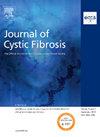Clinical features associated with self-reported food insecurity in people with cystic fibrosis
IF 5.4
2区 医学
Q1 RESPIRATORY SYSTEM
引用次数: 0
Abstract
Background
Food insecurity (FI) is more prevalent in people with cystic fibrosis (PwCF) than the reported national prevalence, but there are limited data on the relationship between FI and health outcomes in PwCF. The objective of this study was to analyze the relationship between FI in PwCF and pulmonary and nutritional status.
Methods
We leveraged an electronic cross-sectional survey that ascertained FI status and gave participants the option to link their survey data to their records in the Cystic Fibrosis Foundation Patient Registry (CFFPR). Linear regression and negative binomial models were used to estimate the associations in mean differences between FI and percent predicted FEV1 (ppFEV1), nutritional indices, and hospitalizations.
Results
There were 1,856 respondents, 1,234 (66.5 %) of whom granted permission to link to the CFFPR. FI was present in 352 (28 %) of the respondents. FI was associated with lower ppFEV1 (-6.5; 95 % CI -9.9, -3.1); however, this was no longer statistically significant after adjusting for confounders. FI was independently associated with increased hospitalizations. Higher weight for age was significantly associated with FI in the adjusted model, but there were no significant associations between height for age or absolute weight and body mass index (BMI) in adults.
Conclusions
FI in PwCF is associated with adverse health outcomes. These results support screening for FI during routine visits. Further studies are needed to investigate causal relationships between FI and adverse clinical outcomes.
囊性纤维化患者自我报告食物不安全的临床特征
背景:食物不安全(FI)在囊性纤维化(PwCF)患者中比报道的全国患病率更为普遍,但关于FI与PwCF患者健康结局之间关系的数据有限。本研究的目的是分析PwCF中FI与肺和营养状况的关系。方法:我们利用电子横断面调查来确定FI状态,并让参与者选择将他们的调查数据与他们在囊性纤维化基金会患者登记处(CFFPR)中的记录联系起来。使用线性回归和负二项模型来估计FI与预测FEV1百分比(ppFEV1),营养指数和住院率之间的平均差异的关联。结果:共有1856名受访者,其中1234人(66.5%)同意链接cfpr。352名(28%)受访者出现FI。FI与较低的ppFEV1相关(-6.5;95% ci -9.9, -3.1);然而,在调整混杂因素后,这不再具有统计学意义。FI与住院率增加独立相关。在调整后的模型中,较高的年龄体重与FI显著相关,但成人年龄身高或绝对体重与体重指数(BMI)之间没有显著关联。结论:PwCF患者FI与不良健康结局相关。这些结果支持在常规访问中筛查FI。需要进一步研究FI与不良临床结果之间的因果关系。
本文章由计算机程序翻译,如有差异,请以英文原文为准。
求助全文
约1分钟内获得全文
求助全文
来源期刊

Journal of Cystic Fibrosis
医学-呼吸系统
CiteScore
10.10
自引率
13.50%
发文量
1361
审稿时长
50 days
期刊介绍:
The Journal of Cystic Fibrosis is the official journal of the European Cystic Fibrosis Society. The journal is devoted to promoting the research and treatment of cystic fibrosis. To this end the journal publishes original scientific articles, editorials, case reports, short communications and other information relevant to cystic fibrosis. The journal also publishes news and articles concerning the activities and policies of the ECFS as well as those of other societies related the ECFS.
 求助内容:
求助内容: 应助结果提醒方式:
应助结果提醒方式:


